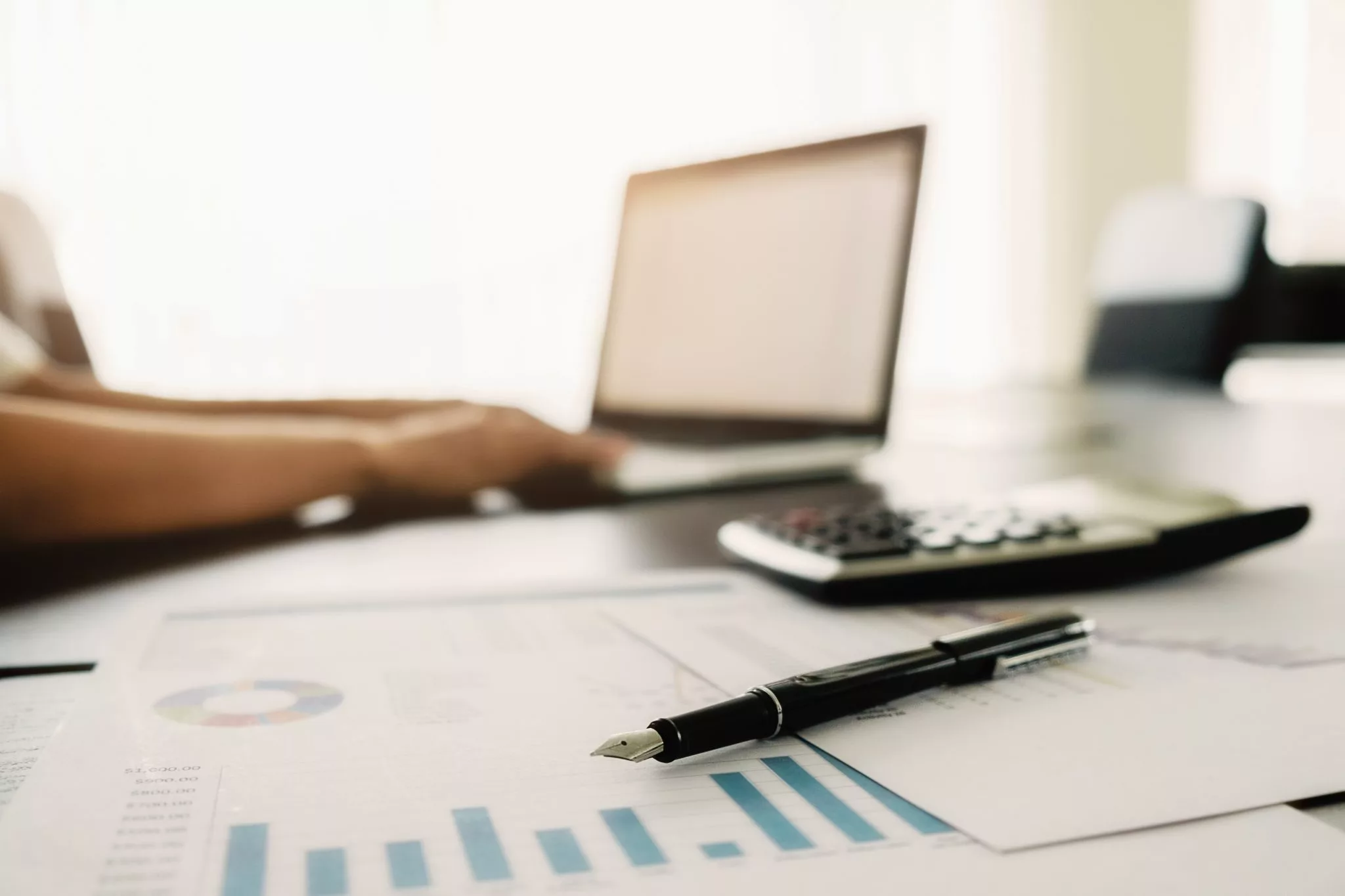The game is afoot – your website is set, the traffic is flowing in, and now you are looking out for ways to monetize it. Digital advertising seems to be one of the most promising revenue streams. You are excited to explore it; however, we suggest it’s time to pause and ponder.
Digital advertising undoubtedly opens up several potential revenue streams for your website. But it also includes several technical concepts and jargon you must know before starting.
So, today, we will start with acronyms like CPM, CPC, CPA, CR, eCPM, eCPC, eCPA, and ROI. Wondering – what are these?
Well, they are the different pricing models used in the AdTech industry based on the goals of an advertising campaign. For example, if the campaign aims to increase brand awareness, then the preferable model is CPM. And if the goal is sales, aka conversion, then CPC, CR, or CPA are the best pricing models.
The revenue generated by your inventories depends on the pricing model chosen. So, in this article, we aim to provide the most important ad revenue formulas that could be used as your little hand guide for revenue calculations.
Table of Contents
How to Calculate CPM?
CPM stands for Cost Per Mille, or cost per thousand impressions (mille stands for thousand in Latin). It is one of the most common online advertising pricing models, and you will get paid for every 1000 impressions received for the ad. You are paid irrespective of whether the user has seen the ad.
CPM Formula
To calculate CPM, divide the total cost of the ad campaign by the number of ad impressions generated, then multiply the result by 1,000.
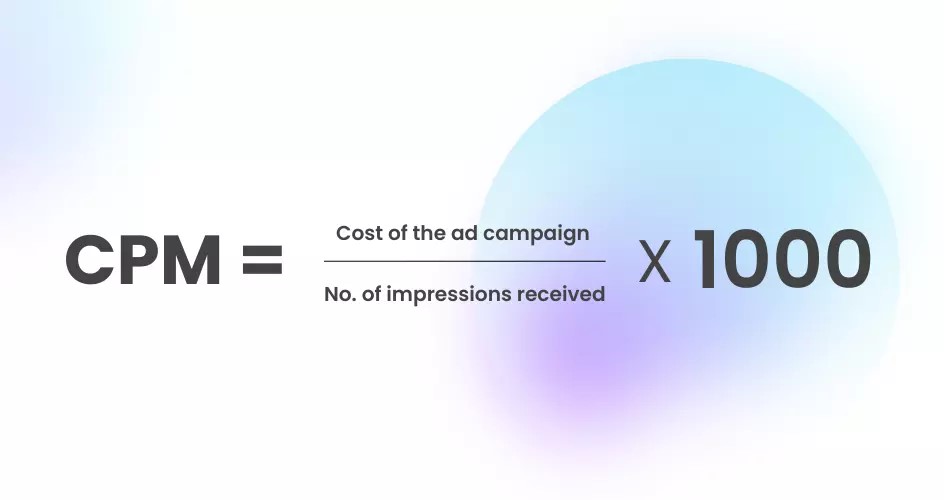
Example: Suppose an advertiser agrees to pay $50 for certain ad campaigns (cost of the ad campaign), and the ad receives 50000 impressions. Then the cost per 1000 impressions will be (50/50000) x 1000 = $1.
Thus, the CPM that the advertiser agrees to is $1.
How to increase CPM? Best tips
- The format and placement of ads can have a significant impact on the CPM rate.
- Ads displayed in prominent positions, like above the fold, usually have higher CPM rates than those in less visible locations.
- Specific ad formats like video ads typically have higher CPM rates than static banner ads.
Calculating CPM accurately allows you to establish competitive prices, draw in advertisers, and improve your revenue streams. Regular tracking and analysis of CPM data are also important to identify trends and adjust strategies.
*Insider Tip: If you have enabled lazy loading, the inventories below the fold will not be considered an impression unless the user scrolls to the part and the ad loads.
Related Read: Understanding CPM: The Key Metric for Publishers’ Revenue Generation.
How to Calculate CPC?
CPC stands for Cost Per Click. So here, the advertiser will compensate you for each click generated by an ad placed on your website. This means that the advertiser will only pay for the number of times the ad has been clicked, not for the views it gets.
CPC Formula
To calculate CPC, you need to know the total cost of the ad campaign and the number of clicks generated by the ad.
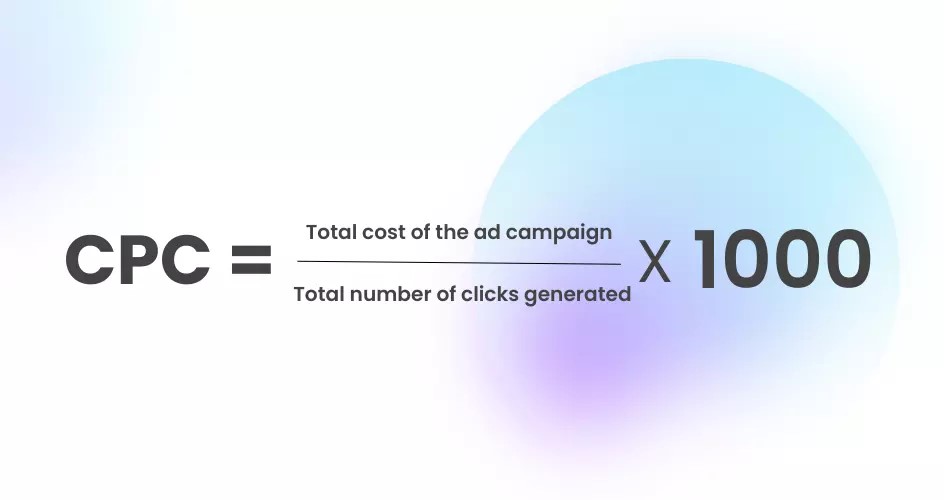
For example, if a campaign costs $300 and generates 100 clicks, the CPC would be $3 ($300/100) for each click.
How to calculate CPC from CPM and CTR?
CPC can also be calculated using CPM and click-through rate (CTR). CTR measures how often the user clicks the link in the ad.
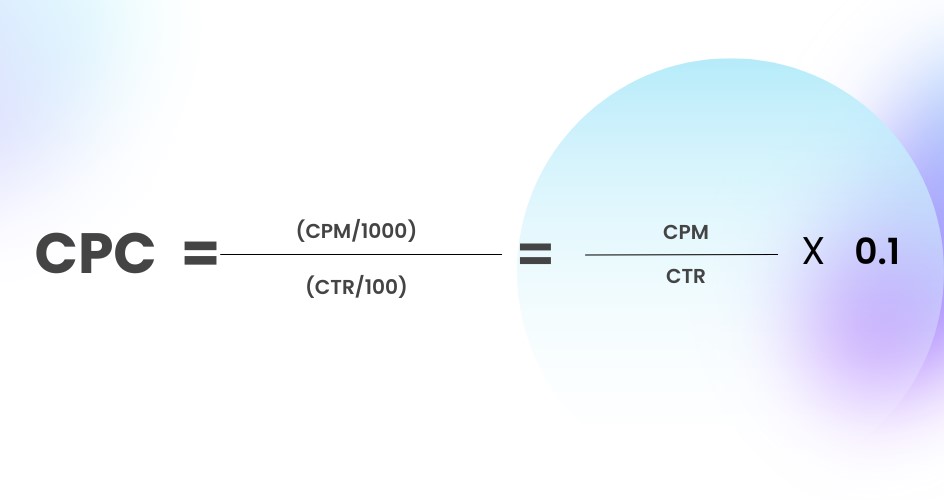
For instance, an ad campaign receives 50,000 views and 100 clicks. The advertiser decided to pay $200. The calculation of CPC using CPM and CTR looks like the one below.
CPM= (200/50000)x1000=$4.
CTR= (Total number of clicks/total number of impressions)x100=(100/50000)x100= 0.2 or 20%.
Hence now CPC= (4/0.2)x0.1= $2.
Therefore, the cost per click is $2.
How to increase CPC? Best tips
- Ads placed in high-visibility areas tend to have higher CPC as they are more likely to be clicked on.
- Certain ad formats, like video or interactive ads, tend to have higher CPC than standard display ads.
- Ads highly relevant to the website content tend to have higher CPC as they are more likely to be clicked on by users.
*Insider Tip: Google AdSense also supports both CPM and CPC (but there are many alternatives) and pays you based on clicks.
How to Calculate CR?
CR, or Conversion Rate, is an important term you may need to consider during an ad campaign. It means the ratio of the number of positive conversions to the total number of clicks received on the ad. The positive conversion may be a situation that profits the company for which the ad was created, like a product’s sale or subscription.
Why does a publisher need to know the CR of a campaign?
It’s simple. If your website has higher Conversion Rates, you can switch to the CPA/CPL pricing model, which is higher than CPM or CPC. This, in turn, boosts your ad revenue.
CR Formula
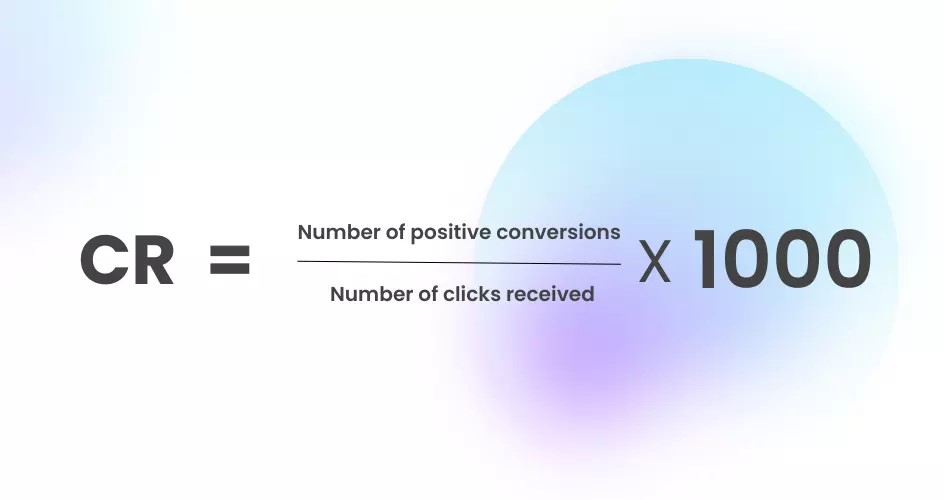
So, if the total number of conversions is 25 out of 1000 ad clicks, the CR will be 2.5%.
*Insider Tip: You can double your ad revenue with the help of header bidding.
How to Calculate CPA?
CPA – Cost Per Action/Acquisition is another ad model that compensates the publisher for any positive customer action like the product sale or sign-in of the newsletter.
CPA Formula
To calculate CPA, you need to know the total cost of the ad campaign and the number of conversions generated by the ad.
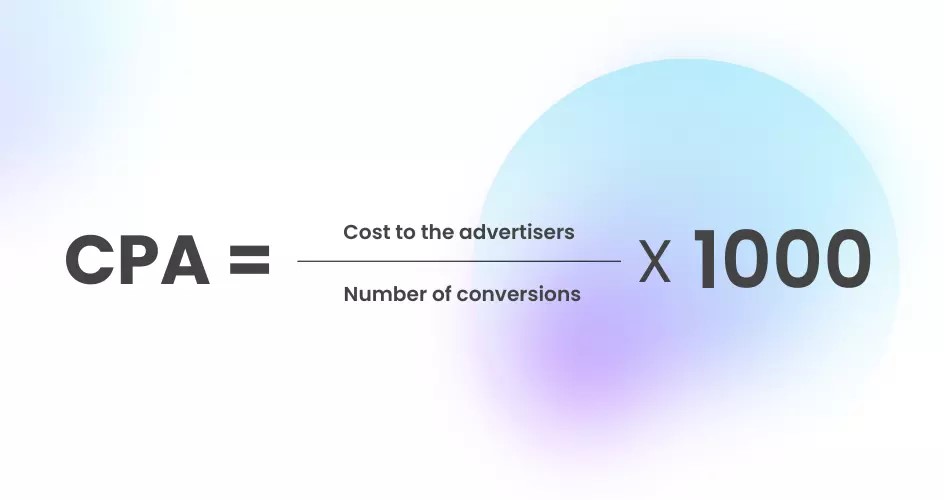
It can also be computed by dividing the cost to the advertiser by the product of the Number of impressions, Click-through-rate, and Conversion rate.
Thus,
CPA = Cost to an advertiser / (Number of ad impressions x CTR x CR)
Example: Suppose a specific ad campaign was viewed 5000 times, received 200 clicks, and there was a total of 20 positive conversions. The total cost that the advertiser decides to pay is $200. Then the CPA can be calculated as follows:
CTR = (200/5000) x 100 = 4% or 0.04.
No. of positive conversions = 20.
So, CR = (20/200) x 100 = 10% or 0.10.
Total cost to the advertiser = $200.
Thus,
CPA = 200/20 = $10.
Or, CPA = 200/ (5000 x 0.04 x 0.10) = $10.
Related Read: CPM vs. CPC vs. CPA vs. CPI vs. CPL.
How to Calculate eCPM?
eCPM stands for Effective Cost Per Impression, a metric measuring the revenue earned per thousand ad impressions. Calculating eCPM can help you evaluate your ad revenue and identify areas for improvement.
eCPM Formula
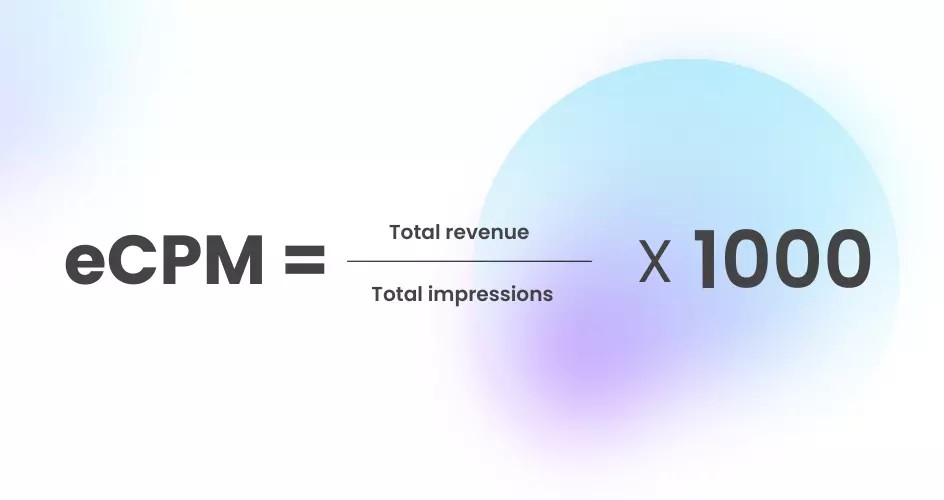
Example: Let’s say that a publisher earns $100 from an ad campaign, and the total number of impressions the ad campaign received is 10000. Then, the eCPM = (100 / 10000) x 1000 = $10
As a publisher, you get an effective earning of $10 for every 1000 ad impressions.
How to increase eCPM? Important tips
- Placing ads in prominent positions on your website, such as above the fold, can increase visibility and attract more clicks, leading to higher eCPM.
- Testing different ad formats, such as native or video ads, can help you identify which ones perform best and generate higher eCPM.
- Displaying ads relevant to your audience’s interests and demographics can lead to higher click-through rates and eCPM.
Related Read: eCPM vs. CPM vs. RPM: A Comprehensive Guide for Publishers.
Why should you calculate eCPM?
eCPM is a great metric to help publishers calculate and optimize their ad campaigns as it allows publishers to compare ad revenues across various platforms directly.
For example, if you see that a video ad on your website received 500 impressions and earned you $5, while a banner ad received 800 impressions and earned $3. You cannot evaluate the performance of both ads directly, but if you find the eCPM quickly, you will know that the video ad had an eCPM of $10 while the banner ad had an eCPM of $3.75. You can directly conclude that the video ad is making you more money.
How to Calculate eCPC (Effective Cost Per Click)?
eCPC stands for Effective Cost Per Click, a concept similar to eCPM. However, there is a slight difference, i.e., it considers the number of clicks received by the ad rather than 1000 ad impressions. Hence, eCPC calculates the earning made from an ad for every click that it gets. eCPC considers any additional costs associated with generating clicks, such as ad serving fees or third-party creative costs, providing a more accurate measure of the actual cost of advertising.
eCPC Formula
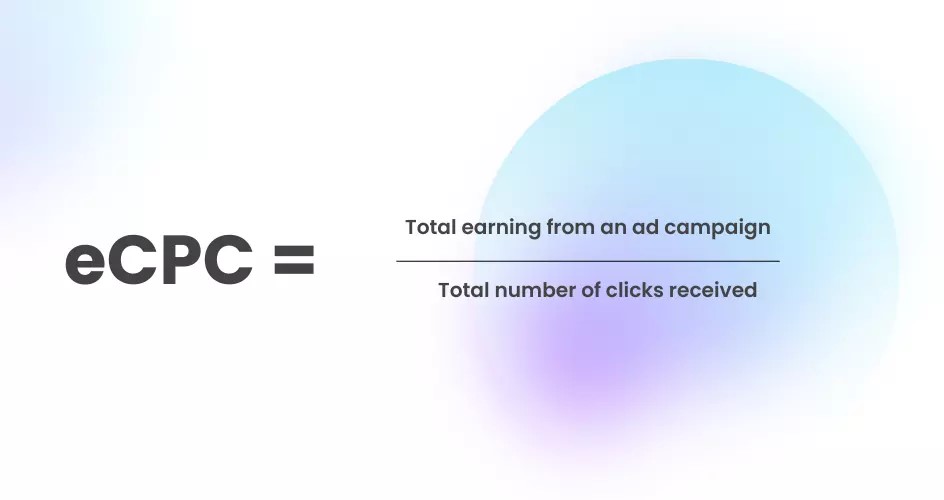
How to Calculate eCPA?
eCPA stands for Effective Cost Per Action. Like eCPM and eCPC, eCPA calculates the effectiveness of the CPA ad model. It is determined by dividing the total earnings generated by an ad campaign by the total number of actions taken on that ad.
eCPA Formula

How to Calculate ROI?
Return on Investment (ROI) is an important term in the field of digital marketing. To know about the success of an ad campaign, it is necessary to analyze the overall profit gained from it. ROI is calculated by subtracting the total campaign cost from the total ad revenue earned and dividing it by the total campaign cost. Sometimes, marketers refer to it as ROAS (Return On Ad Spend).
ROI Formula
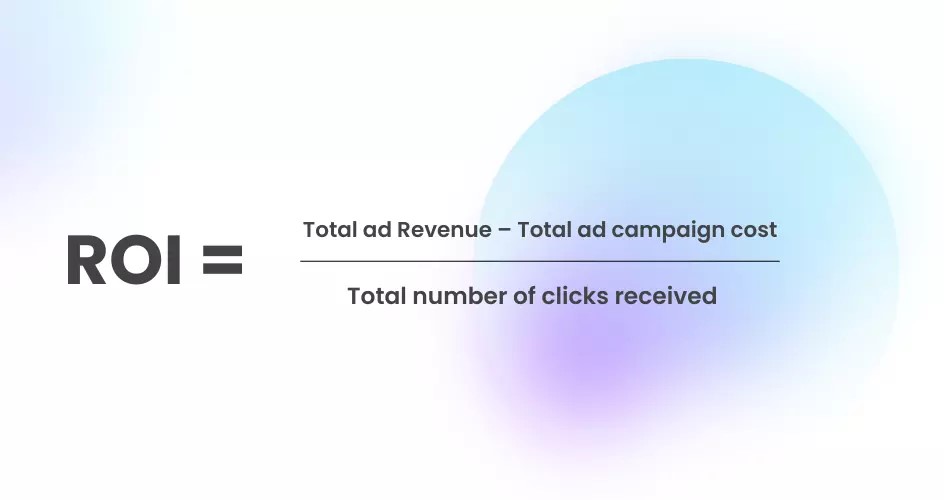
Example: Suppose a company spent $500 on an ad campaign and earned a return of $1500 as revenue. Then, the ROI = (1500 – 500) / 500 = 2. This is equal to 200% of the cost. In other words, for every $1 spent on the campaign, the company earned $2 in return.
Understanding Pricing Models
In digital advertising, each pricing model comes with its own set of advantages and disadvantages, which can significantly impact your revenue and profitability. Understanding these pricing models can help you choose the best option for your advertising campaigns, optimize ad inventory, and improve ad performance.
For instance, if you are a large publisher with a large audience, CPM or CPC is the suitable model to monetize your inventories and generate revenue. The cost-per-acquisition (CPA) or revenue share pricing models may be more appropriate for you if you can deliver high-quality traffic and conversions.
If you still need clarification about which pricing model is best for you, it is advisable to connect with an adtech monetization partner. They can perform a complete website audit to analyze its strengths and choose the right solution to maximize your revenue.
Choosing the best partner from various choices can be an intricate task. Contact us today to find the right one that suits your needs and budget!
FAQs
Q1. How to Calculate CPM?
To calculate CPM, you need to divide the total cost of the ad campaign by the number of impressions generated and then multiply it by 1000.
Q2. What is the CPM Formula?
The CPM formula is (Total Cost of Campaign / Total Impressions) x 1000.
Q3. What is CPC vs eCPC?
CPC (Cost Per Click) is the amount an advertiser pays for each click on their ad. At the same time, eCPC (Effective Cost Per Click) considers any additional costs associated with generating clicks, such as ad serving fees or third-party creative costs.
Q4. What is CPM vs. eCPM?
CPM represents the revenue publishers earn for every 1,000 website ad impressions. eCPM (Effective Cost Per Mille/Effective Cost Per Thousand) takes into account all the different campaigns running on the publisher’s inventory, including CPM (cost per mille), CPC (cost per click), and CPL (cost per lead) campaigns.
Q5. What is CR?
CR (Conversion Rate) for publishers is the percentage of users who take a desired action, such as filling out a form or making a purchase, after clicking on an ad.


